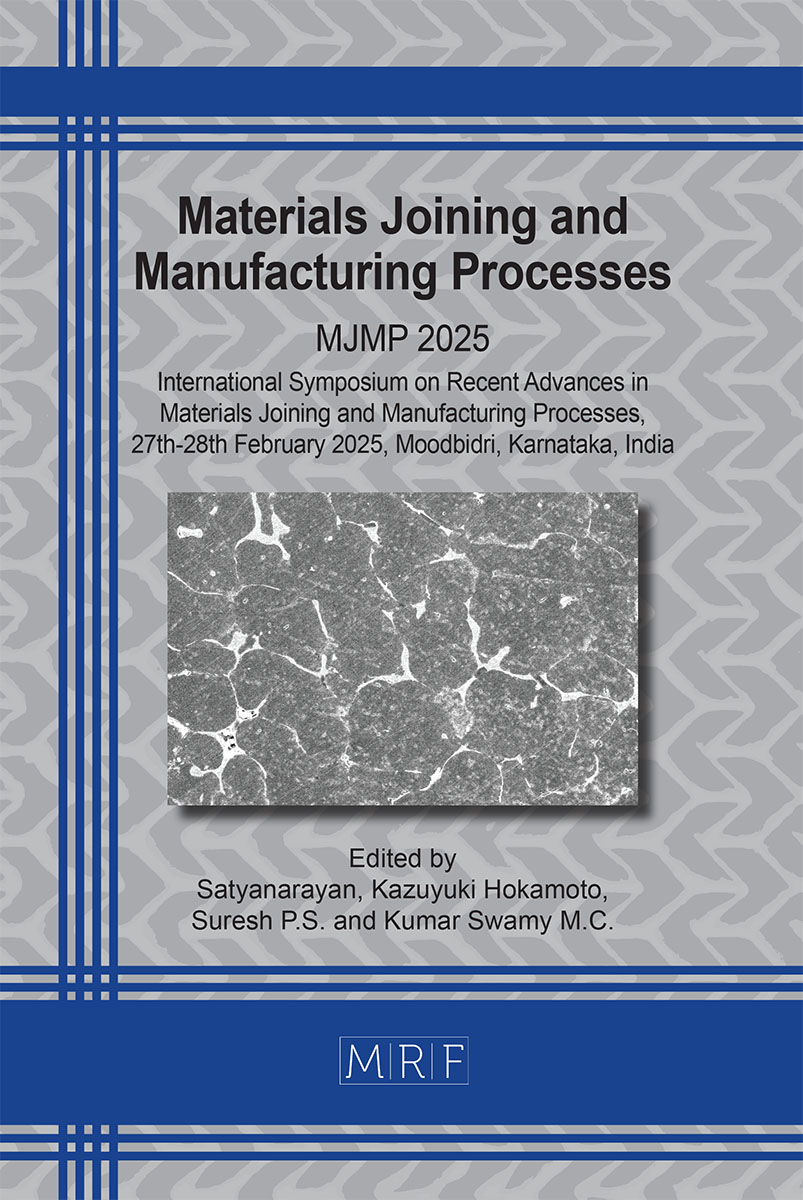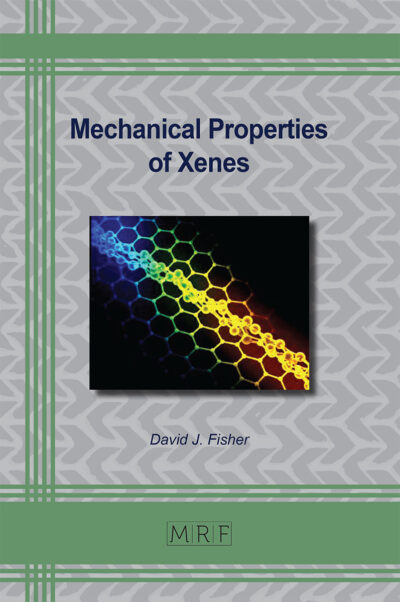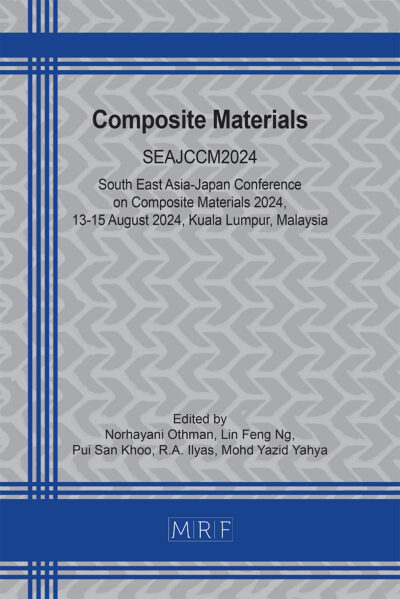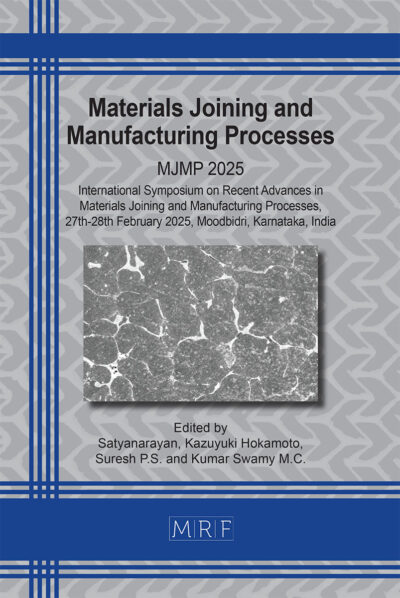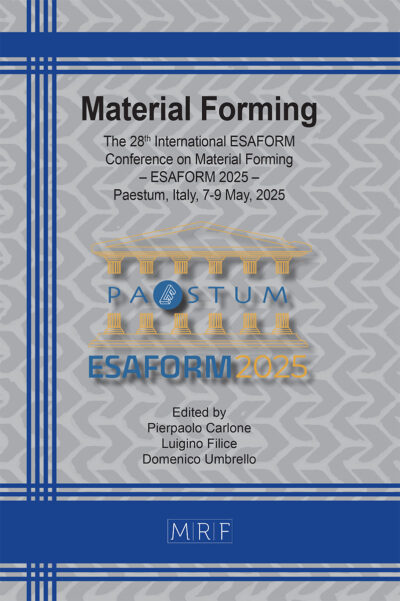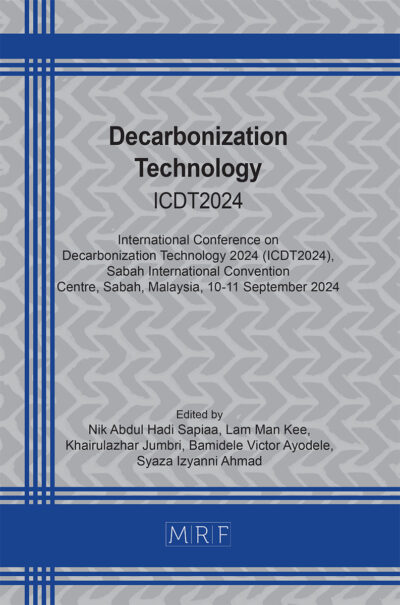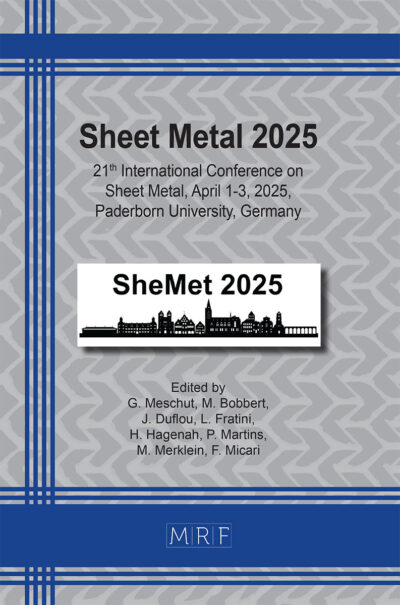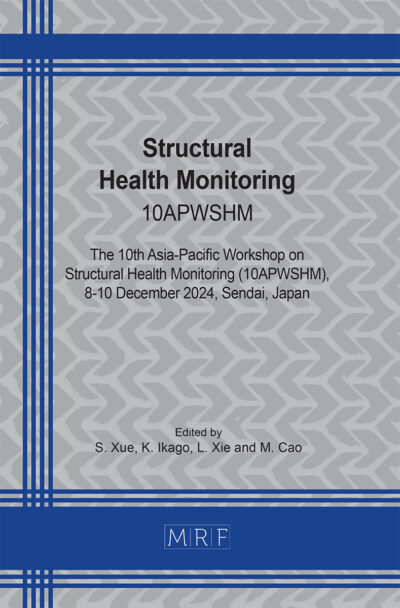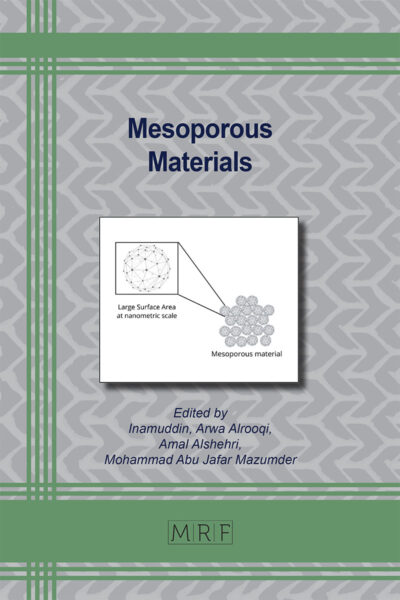An investigation of thermogravimetric analysis and thermal conductivity of glass fibre epoxy resin composites modified with silicon carbide, manganese, and copper nanoparticles (NPs)
Gurushanth B. Vaggar, S.C. Kamate2,b, Kiran C.H., Deepak Kothari, S.L. Nadaf, Vishalagoud Patil
Abstract. In the current work, the effect of copper (Cu), manganese (Mn), and silicon carbide (SiC) nanoparticles on the thermal stability and conductivity of glass fiber-epoxy resin composites was discussed. Thermogravimetric Analysis (TGA) was done as per ASTM E 1131 to study the thermal degradation of composites from 30°C to 800°C. Thermal conductivity increases with the percentage of fillers of SiC, Mn, and Cu nanoparticles in the GFER polymer composites. The combination of epoxy, Glass Fibre and SiC nanoparticle-loaded composites was found highest thermal conductivity. TGA discloses that for SiC, Mn and Cu NPs glass fibre epoxy resin composites thermal stability increased with the percentage weight fraction of nanoparticles. The addition of nanoparticles to glass fibre epoxy resin polymer composites causes an increase in thermal properties due to the nanoparticles acting as catalysts for decomposition and less mass loss observed in TGA. The Thermal Conductivity of 20% SiC nanoparticles were found to be 0.37 W/mK. In Overall comparison, SiC nanoparticle-loaded composites exhibit significantly improved thermal stability and are more suited where the heat transfer plays the predominant role in high thermal conductivity and more thermal stability application fields.
Keywords
Silicon Carbide (SiC) Nanoparticles, Glass Fibre (GF), Epoxy Resin (ER), Manganese (Mn) Nanoparticles, Copper (Cu) Nanoparticles, Thermal Conductivity, Thermogravimetric Analysis (TGA)
Published online 6/1/2025, 7 pages
Copyright © 2025 by the author(s)
Published under license by Materials Research Forum LLC., Millersville PA, USA
Citation: Gurushanth B. Vaggar, S.C. Kamate2,b, Kiran C.H., Deepak Kothari, S.L. Nadaf, Vishalagoud Patil, An investigation of thermogravimetric analysis and thermal conductivity of glass fibre epoxy resin composites modified with silicon carbide, manganese, and copper nanoparticles (NPs), Materials Research Proceedings, Vol. 55, pp 57-63, 2025
DOI: https://doi.org/10.21741/9781644903612-10
The article was published as article 10 of the book Materials Joining and Manufacturing Processes
![]() Content from this work may be used under the terms of the Creative Commons Attribution 3.0 license. Any further distribution of this work must maintain attribution to the author(s) and the title of the work, journal citation and DOI.
Content from this work may be used under the terms of the Creative Commons Attribution 3.0 license. Any further distribution of this work must maintain attribution to the author(s) and the title of the work, journal citation and DOI.
References
[1] Y. L. Brian, O. Jason, Properties of composite materials for thermal analysis involving fires, Comp. part A 37 (2006) 1068-1081. https://doi.org/10.1016/j.compositesa.2005.01.029
[2] K. Dilek, H. T. Ismail, M. T. Coban, Thermal conductivity of particle filled polyethylene composite materials, Comp. Sci. and Tech. (2003) 113–117, https://doi.org/10.1016/S0266-3538(02)00194-X
[3] S. Krishnamachar, M. B. Siddalingappa, Thermal conductivity enhancement of epoxy by hybrid particulate fillers of graphite and silicon carbide, J of Min. and Mat. Charact. and Engg., (2015), 3, 76-84. http://dx.doi.org/10.4236/jmmce.2015.32010
[4] J. Naveen, Md. Jawaid, Z. Edi Syams, Md. H. S. Thariq, Y. Ridwan, Enhanced thermal and dynamic mechanical properties of synthetic/natural hybrid composites with graphene nanoplateletes, Polymers (2019), 11, 1085. https://doi.org/10.3390/polym11071085
[5] C. Watthanaphon, F. Daisuke, T. Shuichi, U. Hideyuki, I. Yoshiyuki, Thermal and mechanical properties of polypropylene/boron nitride composites, Energy Procedia 34 (2013) 808 – 817. https://doi.org/10.1016/j.egypro.2013.06.817
[6] D. Kim, I. Chung, G. Kim, Study on Mechanical and thermal properties of fiber-reinforced epoxy/hybrid-silica composite, Fib. and Poly. (2013), 2141-2147. https://doi.org/10.1007/s12221-013-2141-9
[7] M. T. Le, S. C. Huang, Thermal and mechanical behaviour of hybrid polymer nanocomposite reinforced with graphene nano platelets, Materials (2015), 8, 5526-5536, https://doi.org/10.3390/ma8085262
[8] S. R. Akm, R. Vijaya, S. Jeelani, Thermal and mechanical properties of woven glass fiber reinforced epoxy composites with carbon nanotubes grown in-situ, IJES, ISSN (e): 2319 – 1813 ISSN (p): 2319 – 1805 (2015).
[9] A. K. Aseel, Enhanced thermal and electrical properties of epoxy/carbon fiber–silicon carbide composites, Adv. Comp. Letrs. (2020), https://doi.org/10.1177/2633366X19894598
[10] B. Bhasker, Dr. M. Devaiah, P. Laxmi Reddy, M. R. Gandhi, Thermal characterization of fibre reinforced polymer composites and hybrid composites, IJME&T, Volume 10, Issue 03, (2019), pp. 1055–1066, Article ID: IJMET_10_03_106.
[11] G. Mittal, K. Y. Rhee, M. S. Vesna, D. Hui, Reinforcements in multi-scale polymer composites: Processing, properties, and applications, Comp. Part B 138 (2018) 122-139, https://doi.org/10.1016/j.compositesb.2017.11.028
[12] R. Ambigai, S. Prabhu, Analysis on mechanical and thermal properties of glass carbon/epoxy based hybrid composites, Matls. Sci. and Engg. 402 (2018) 012136. https://doi.org/10.1088/1757-899X/402/1/012136
[13] D. H. Ebadi, M. N. S. Branch, Thermal conductivity of nanoparticles filled polymers, Islamic Azad UISNT. 519-540 (2012). https://doi.org/10.5772/33842

